Safe Finder
Safe Finder is an aggressive Mac browser hijacker aimed at altering browser settings in order to promote questionable websites and fake search engines. Experts report that Safe Finder causes sudden page redirects in the browser and collects user data without permission.
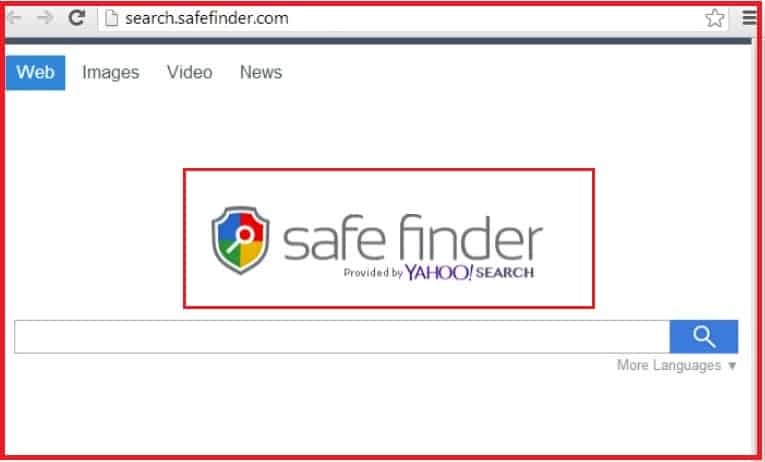
Though Safe Finder isn’t categorized as a virus and is usually not seen as a particularly serious threat to the system, its presence there is definitely not desirable and could lead to numerous problems if not removed on time.
The main goal of Safe Finder (and other apps like it) is to use the users’ browsers as platforms for online promotion and aggressive advertising of different sites, products, or services. As soon as it gets in the browser, this hijacker will replace the default homepage to search.safefinder.com and make it so that your online searches are handled by this fake search engine.
The reason we say the Safe Finder search engine is fake is that every time you try to search for something using it, you will be redirected to a Bing or a Yahoo page with results for your search. The fact that you get redirected to Bing/Yahoo isn’t the problem – after all, those are two of the most popular search engines out there, and they are perfectly safe to use. The issue is that your browser would probably get rerouted through several other sites before it lands on the Bing/Yahoo page. The redirects through those other sites usually take less than a second, so many users don’t even register them. The idea behind those redirects is to artificially boost the view count of the sites that the browser gets rerouted through. However, the sites that get promoted in this way are usually ones with low reputation and questionable content. Even though your browser visits each of them for a split second, this could be enough for your privacy and security to become threatened. Many of those sites collect browsing data without permission and may gain permissions in your browser without your informed approval. For that reason, you should try to avoid using the Safe Finder search engine if possible and also do what you can to delete the hijacker from your browser(s) so that you’d be able to restore your default homepage and search engine.
Another problem with this hijacker is that it may automatically install additional unwanted components in the browser, including rogue add-ons that may negatively impact the browser’s performance as well as compromise your online security and privacy.
Hopefully, once you get rid of Safe Finder, you should be able to eliminate any changes that it has made in the browser.
Safe Finder cannot be removed from Mac
If Safe Finder cannot be removed from Mac, that’s because it’s using the enterprise policy of the infected browser that prevents users from deleting certain apps. Even if Safe Finder cannot be removed at the moment, deleting its files should allow you to uninstall it.
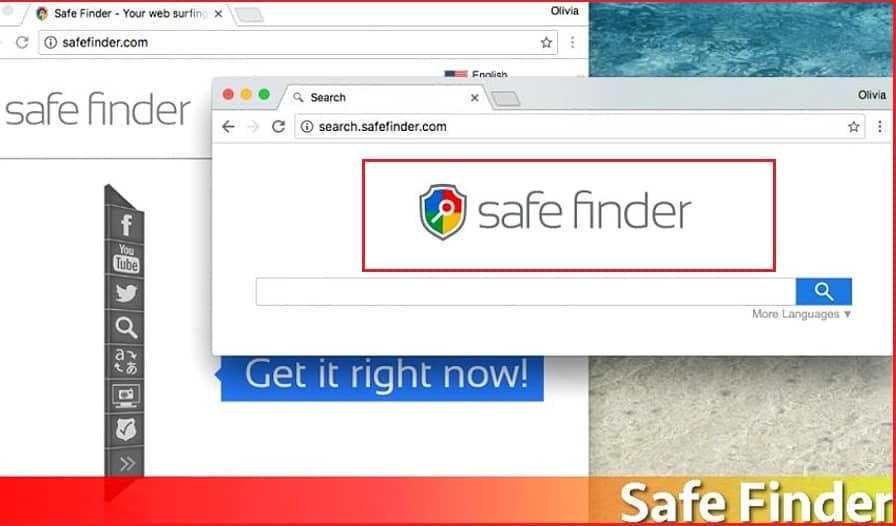
Many users are having problems with removing this hijacker from their browser (any type of browser and not only Safari). One of the main reasons why it may be difficult to eliminate Safe Finder is the built-in enterprise policy that most modern browsers have. The purpose of this feature is to prevent users from making certain changes to the browser settings of their work computers. In such cases, only the network Administrator should have the privilege to make those changes. Safe Finder is able to abuse this feature and prohibit its victims from revoking the changes made by the hijacker in the browser. In such cases, it doesn’t matter if you are the system Admin, you still wouldn’t be able to revoke the browser changes made by Safe Finder. When you attempt to delete the hijacker from the infected browser, you are likely to be shown a message that reads “settings managed by your organization” or something similar. This can definitely be quite frustrating, especially if you see it on your personal computer. The good news is that there are ways to make this message disappear and to successfully delete the hijacker. We will tell you about how this can be done in our Safe Finder removal guide that is available down below.
One thing that may potentially make it a bit more difficult to eliminate this hijacker is not knowing what program introduced it to your Mac. Usually, if a Mac user gets any type of malware or unwanted software, it is because some rogue app downloaded from an unreliable site/app store has been installed on the computer. Many such Mac apps carry within themselves hidden hijacker components. This is why, if you wish to prevent the installation of other hijackers in the future, it is strongly recommended that you don’t download any apps on your Mac that are not from the official Mac App Store. If you absolutely have to download something from a third-party source, at least make sure that the third-party source is reliable and the app you are about to download is safe. One way to do this is by searching for user opinions regarding the app and its developer.
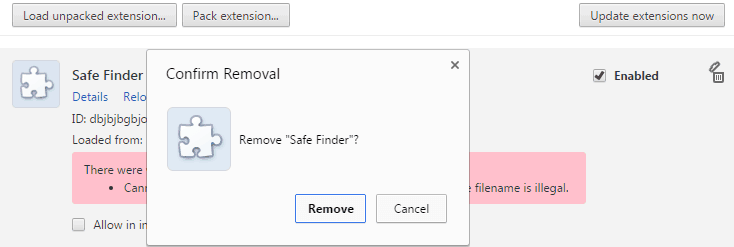
Another possible cause of the hijacker infection in the browser is the user clicking on “Allow” when a misleading browser pop-up shows up on their screen. Such pop-ups are usually displayed by unreliable sites in an attempt to gain permission to show additional pop-ups in the browser and to make changes in its settings. Depending on what has caused the hijacker infection in your Mac, the way to get rid of Safe Finder may be different. In our guide, we’ve tried to cover everything and show you methods that can help you get rid of the hijacker.
SUMMARY:
| Name | Safe Finder |
| Type | Browser Hijacker |
| Detection Tool |
How to remove Safe Finder on Mac
To remove Safe Finder from your Mac, you will have to clean your browsers, find and quit its process, and delete the hijacker app and files.
- Check each of your browsers for unfamiliar/unwanted add-ons and delete anything that you think shouldn’t be in them.
- Use the Activity Monitor utility to look for rogue processes and quit anything unwanted you may find.
- Check the Applications folder for apps that may be responsible for infecting you with the hijacker and uninstall any such apps.
- Check the next four folders for malware files and delete what you find: /Library/LaunchAgents, /Library/LaunchDaemons, ~/Library/Application Support, and ~/Library/LaunchAgents.
These four steps provide an outline for the entire removal process of the hijacker. However, we understand that you may need a bit more detailed explanation with regard to one or more of the steps. For that reason, below you can find a detailed version of the guide that will show you exactly how each one of the steps needs to be performed.
Remove Safe Finder from Safari
To remove Safe Finder from Safari, you must make sure that any unwanted/rogue browser extensions are deleted, and then you must revoke any browser settings changes made by the hijacker.
- Launch the browser, go to the menu labeled Safari from the top, and select the Preferences button
- Go to Extensions and look for anything that may be unwanted or that hasn’t been added by you to the browser.
- If you spot any undesirable items in the Extensions section, remove them from the browser.
- Repeat steps 1 to 3 with the other browsers on your computer.

If after you removed the unwanted extension/extensions from the browser you are still seeing symptoms related to Safe Finder (for instance, if the homepage is still set to search.safefinder.com), then you should also complete the following steps to ensure the full deletion of the hijacker and its browser changes.
- Open the Privacy tab from the Preferences bar and click on Remove All Website Data. From the dialogue window that shows up, select Remove Now to launch the action and wait for the data deletion to finish.
- Also go to the General tab and there delete what’s currently in the homepage address field (the address there would likely be search.safefinder.com) and replace it with the address of a legitimate site.
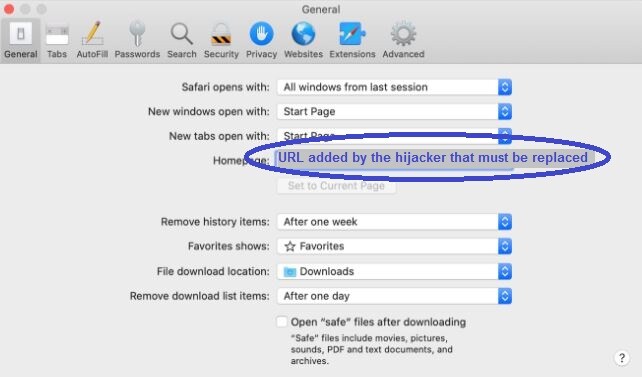
- Lastly, open the menu labeled History, select the Clear History option, set the command to All History, and click Clear History again to initiate the action.
Remove Safe Finder from Chrome
To remove Safe Finder from Chrome, it’s important to clean the browser from any rogue add-ons installed in it and then restore any settings that have been altered by the hijacker.
- Type ://settings in the Google Chrome URL bar and hit Enter.
- Select Extensions and look for any items that may be linked to Safe Finder.
- If you see such extensions, disable them and then remove them from the browser.

- Next, go to the Settings page again and select the Appearance section.
- See what the URL for the new tab page address is – if it is search.safefinder.com or any other unwanted address, replace it with the address of a reputable website that you’d prefer to be the browser’s new tab page.
- Now go to the Search Engine settings and then click on Manage Search Engines. On that page, disable any unfamiliar search engines that you see by clicking the three-dot icon next to them and then selecting the Remove from list option.
- Lastly, from the Privacy and Security settings, click on Clear browsing data, put ticks in all boxes but the Passwords one, and then select Clear Data. Wait for the process to complete without quitting the browser before the completion.
How to get rid of Safe Finder
To get rid of Safe Finder, you should disable its process (or processes) from the Activity Monitor utility.
- Click on the Finder button from the top and then go to Applications.
- In the Applications folder, open Utilities and then launch the Activity Monitor tool.
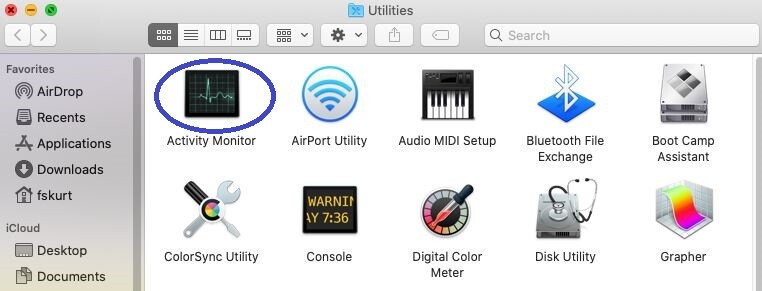
- In the Activity Monitor, try to find a process that you think may be related to Safe Finder – focus on the processes that are using the most RAM and CPU as the one that’s coming from Safe Finder is likely resource-intensive.
- If you find a process named Safe Finder or another one that looks questionable, select it and then click on the X in the top-left to quit the process to get rid of Safe Finder.
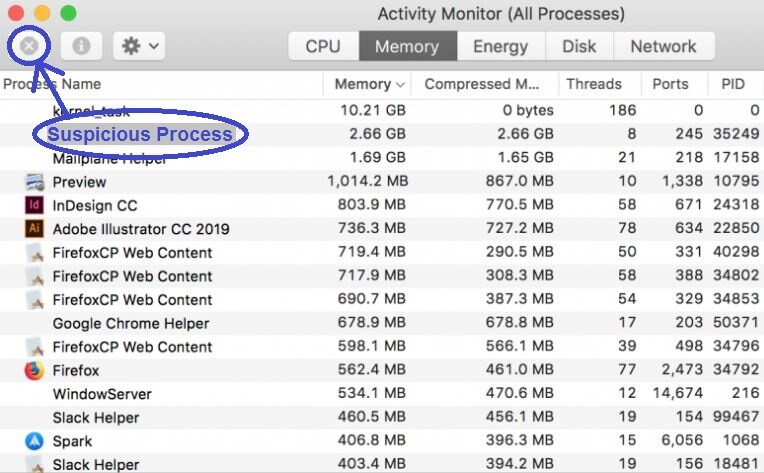
The following are tips that may help you recognize the malicious process and quit it.
- As was already stated above, the rogue process will probably be consuming lots of system memory, RAM, and battery life, so look at the most resource-intensive processes while searching for it.
- We recommend searching online for information about the processes you think may be rogue – often a seemingly suspicious process may turn out to be a legitimate one from your macOS. Therefore, it’s best to see what researchers and other users have said about any processes you think could be rogue.
- You can also learn more about the suspected process by clicking on it, then selecting Sample > Save, saving the sample to your Desktop, and then testing the sample file for malware with the help of the free online malware scanner we’ve posted right below:Each file will be scanned with up to 64 antivirus programs to ensure maximum accuracyThis scanner is free and will always remain free for our website's users.This file is not matched with any known malware in the database. You can either do a full real-time scan of the file or skip it to upload a new file. Doing a full scan with 64 antivirus programs can take up to 3-4 minutes per file.Drag and Drop File Here To Scan
 Analyzing 0 sEach file will be scanned with up to 64 antivirus programs to ensure maximum accuracyThis scanner is based on VirusTotal's API. By submitting data to it, you agree to their Terms of Service and Privacy Policy, and to the sharing of your sample submission with the security community. Please do not submit files with personal information if you do not want them to be shared.
Analyzing 0 sEach file will be scanned with up to 64 antivirus programs to ensure maximum accuracyThis scanner is based on VirusTotal's API. By submitting data to it, you agree to their Terms of Service and Privacy Policy, and to the sharing of your sample submission with the security community. Please do not submit files with personal information if you do not want them to be shared.
If malware gets detected in the sample file, delete that file, and then quit the process that it comes from.
After the hijacker process has been successfully stopped, you should also check your system for rogue Safe Finder files and delete them. There are several directories that are the most likely to have such files stored in them and below we will show you how to get to them and clean them from any unwanted files.
- From your keyboard, select the following keys by pressing them together, in that order: Command + Shift + G.
- In the Go to Folder window that opens, copy-paste the following folder location and click on GO: /Library/LaunchAgents.

- Search that folder for suspicious files added after Safe Finder infected your browser and if you find any, delete them. Do not forget to use the scanner we posted earlier in this guide to test any files that you think may be suspicious. If the scanner flags them as malware, you should most definitely delete them.
- Also, if you see any of the following files in the /Library/LaunchAgents folder, delete them as well since they are known to be related to Safe Finder:
- com.msp.agent.plist
- com.updater.mcy.plist
- com.pcv.hlpramc.plist
- com.avickUpd.plist
- The next folder you must visit is /Library/LaunchDaemons. In it, too, search for recently-added suspicious files that must be deleted. Also, delete the following files if you see them in that folder:
- plist, com.startup.plist
- com.ExpertModuleSearchDaemon.plist
- com.ExpertModuleSearchDaemon.plist
- Also go to the ~/Library/LaunchAgents folder, delete any questionable files that you may find in it. If you see any of the files that we listed under Step 3 in that folder, delete them as well.
- The last folder that you should check is ~/Library/Application Support. In it, you must look for entire sub-folders that may be linked to Safe Finder. The following are examples of such folders that are confirmed to be related to the hijacker and so if you see them, you must delete them:
- OperativeProgram
- ControlFraction
- ConsumerOpinion
- AnalyzerSkill
- FractionData
- After you are done with deleting rogue files, go to Finder > Applications, look for apps that may be responsible for bringing the hijacker into your system, and if you see anything questionable, send it to the Trash.
- Next, select the Apple menu (top-left), select System Preferences, then go to Users & Groups, and select Login Items. If any of the items shown in that list seem related to Safe Finder, be sure to remove them.
- Go back to System Preferences, select Profiles, and delete any profiles listed there that you do not recognize and that haven’t been created by you or by anybody else who regularly uses that computer. Note that even if a given profile seems to have a legitimate name, if it is unfamiliar to you, it should be deleted. Here are several examples of seemingly legitimate profiles that must have been added by the hijacker:
- Safari Settings
- Chrome Settings
- Main Search Platform
- Lastly, do not forget that our comments section is always open to our readers, and you can ask us for further assistance in case you haven’t been able to perform a certain step or remove the hijacker.
Safe Finder is a rogue app for Mac that changes the homepage and/or default search engine of the user’s browser to search.safefinder.com. Safe Finder also causes automatic page redirects to that site and can collect data from the browser without user permission. This undesirable app is a typical example of a browser hijacker. The goal of Safe Finder is to earn revenue for its creators through aggressive Pay-Per-Click advertising and Pay-Per-View page redirects.
The first symptom you are likely to notice if Safe Finder gets added to any of your browsers is the homepage replacement. As mentioned above, once the hijacker gets added to the browser, it will typically change its default homepage and its search engine to search.safefinder.com. Two other possible addresses that this hijacker may use as replacements for your homepage are search.macsafefinder.com and search.safefinderformac.com. All of those sites are basically fake search engines that will reroute you to a Yahoo search page whenever you try to use them to search for something on the Internet. The likely idea behind this is to generate ad and commission revenue by using Yahoo search results. Though the creators of Safe Finder may claim that the search engines they add to the browser are helpful and can make one’s online experience more pleasant and optimized, the truth is that there’s little to no use to any of those search engine pages as they all use Yahoo search to generate their results.
Admittedly, though irritating, the presence of Safe Finder on the computer probably doesn’t sound like a huge deal. After all, if you are getting rerouted to Yahoo, then there’s no harm done, right? Well, truth be told, Safe Finder is not a real virus and it won’t directly harm your Mac. However, the change in the homepage and search engine may not be the only thing that this hijacker does in the browser. It may also make other alterations such as install sketchy extensions in the browser or keep tabs on what you do online and then transfer that information to its creators or to third parties. On top of that, once the browser changes are introduced, you will not be allowed to revoke them even if you are the computer’s manager. As it turns out, the creators of unwanted software such as Safe Finder have come up with a way to abuse and exploit the built-in enterprise policies that most browsers have. When implemented, those policies allow the administrator of a network to impose rules that can’t be overridden by the admins of the separate computers in that network. While useful under normal circumstances, in the current case this feature is used to restrict the user’s ability to control the settings of their own browser which is why you may see a message that reads “managed by your organization” (or a similar message) when you try to change a setting that has been enforced by Safe Finder. In such cases, the only way to restore control over your browser(s) is to uninstall the hijacker.
If Safe Finder cannot be removed from your Mac, you must first delete the files that this hijacker has created in the system. Those files allow it to gain persistence on the computer and without their deletion, you cannot remove Safe Finder from your Mac. One of the major problems with hijackers like this one is that they can be rather tricky to remove. Though in some cases, users who are lucky may be able to delete a hijacker likely they would remove a regular app, in most instances deleting Safe Finder and other similar software would require you to go through several steps in order to find everything this app has added to your system and remove it before you could finally be sure that the hijacker is gone. One potential obstacle here is not being sure what brought the hijacker into your computer. In most cases, the users have no idea how Safe Finder got installed. This is because apps like it rely on third-party software. With which they get bundled, to distribute them. Once that third-party app is installed, the hijacker component hidden inside it gets added to the system as well and hijacks the user’s browser(s). If any of your browsers seems to be under the effects of Safe Finder at the moment, we suggest you follow the removal instructions we’ve shared below. If you need extra help, you can also try out the professional malware-removal app that can be found inside the guide – it is a powerful security tool that specializes in finding and deleting browser-affecting malware such as Safe Finder. Also, do not forget about the comments section down below – there you can ask us anything concerning Safe Finder and its removal.
To Remove Safe Finder on Mac, you first have to try to find and delete the rogue app that is responsible for infecting you with this hijacker. First, open the Finder app from the menu bar at the top.
Click on the Applications folder (left panel) and then look for suspicious and unknown applications in that folder.
If you notice an app that you do not recognize or one that seems unneeded and unwanted, drag said app to the Trash on your Desktop. Select the Trash icon with the right-click of the mouse and click on Empty Trash to finish the uninstallation and to remove Safe Finder on Mac. Reboot the system to apply the changes and check for any remaining signs of the hijacker’s presence.
To remove Safe Finder from Safari, you first need to delete any rogue extensions this hijacker may have added to the browser and then revoke any unwanted changes in the browser’s settings. Start the browser, go to Safari from the top, and select Preferences from the drop-down menu.
Select the Extensions page from Preferences and see if there are any suspicious, unknown, or seemingly unwanted extensions listed there.
If you notice an extension that shouldn’t be there, click on its Uninstall button to remove Safe Finder from Safari.
Reboot the computer and go to Safari’s extensions page again to check if the deleted extension(s) is still gone.
If the extension has returned in the browser, complete the remainder of this guide and then repeat the previous four steps.
To remove Safe Finder from Chrome, you should first check the browser’s extensions and delete anything unwanted and then refresh the rest of Chrome’s settings. Open the browser and type ://settings/ in its URL bar/omnibar.
Go to Extensions and look for suspicious items that may have been installed in the browser by Safe Finder.
Disable the suspected extensions and then uninstall them to remove Safe Finder from Chrome. Now go back to the Settings page and select Appearance from the left.
Look at the new-tab page address – if it is search.safefinder.com or something similar, delete it and replace it with another address from a trusted site.
Next, select the Search Engine option from the left, expand the Manage search engines settings and look for sketchy search engines listed there. If you see anything that may be related to Safe Finder or anything unfamiliar there, block it by clicking on the three-dots next to it and then on the Remove from list button.
Finally, go to the Privacy and Security settings, select Clear browsing data, check everything except passwords, and click on Clear data to execute the command.
To get rid of Safe Finder, you may also have to quit the Safe Finder process from the Activity Monitor. Go to Finder from the menu bar again, open Applications, and then go to the Utilities folder.
Start the Activity Monitor app and look for a process named Safe Finder. If there isn’t a process with that name, look for another suspicious-looking process with high RAM, CPU, or battery life usage.
Click on the suspicious process, and then select the X button from the top-left to quit that process and get rid of Safe Finder.

Hi Asadullah Mohammadi,
can you open the options menu on the program and see if there’s an option that is preventing you to uninstall it.
Hi marcus,
there are legit. Our team researched these IPs and they turned out to be harmless.
Hi earlred,
this one is ok it’s harmless and you can leave it as it is.
The safe finder program is just not getting uninstalled frim my control panrl
When i click uninstall nothing happens
Hi, Rishika. Does the account, you’re currently using have Administrator privileges? You need an Administrator account in order to uninstall programs from the computer. Also, if you can send a screenshot, we might be able to get a better grasp of the situation.
Hi, Raven, you can refer to our article named How to Remove Ads On Mac if you are seeking for a Mac adware removal guide.
We have created a separate guide for that which is where you should go. The guide’s title is How to Remove Ads On Mac. If you are having problems with your Mac, go ahead and check it out.
Were there any IP addresses in your Hosts file below “Localhost” (as described in Step 3 from our guide). Also, it would help us determine where the issue is coming from if you send us a screenshot of your program installs from your Control Panel (Step 2).
Your program installs seem to be in order. However, you did not send us a screenshot of your Hosts file. We strongly recommend that you check that since you’re likely to have some unwanted IP addresses there.
All of those IP’s below “localhost” seem to be coming from the unwanted software. Therefore, make sure to delete them and save the changes to the Hosts file.
Thank you almost all problems solved but Ludashi is stil present
We are glad that most of your problems have been dealt with. If you can send us a screenshot of what Lidashi is or explain to us what the exact issue is, we might be able to help you with that too.
great article with straight forward steps, thanks!!!
We are glad that our guide has helped you resolve your problem!
Follow the path to the specific file (it is shown in the sample text) and once you get there, scan the file via our scanner.
how would i get rid of this it pops up frequently and causes new tabs to open up in chrome with an ad or fake flashplayer like download.
What steps from the guide did you complete?
I would really appreciate some help with removing Safe Finder from my Safari. I am under a Proxy on Mozilla Firefox right now, but I don’t know how to use your malware scanner you provide. If you need to know, my Mac is updated to the most recent release (Mojave).
The first thing to do is complete the steps from the guide. The online scanner on our site is supposed to check separate files for malicious/questionable code. If you are referring to the suggested removal tool, you need to download it and purchase its license to use it. Then again, we still advise you to simply complete all of the steps from the guide and then, if this didn’t work, tell us about it.
Not effective at all. The version I got doesn’t show up in extensions, for chrome or safari, does not show the homepage being changed, and holding shift, or not, regardless of clearing data etc it always opens with the safefinder search in the browser, but not in the address bar.
It did not help at all, probably because the “homepage” slot is locked and cannot be changes, I also couldn’t find anyway to unlock it, it seems as the malware is locking it, so I can’t edit/change it, tho I was able to complete all the other steps succesfully.
If completing the guide isn’t enough to solve the issue, you may need to try the removal tool suggested in it.